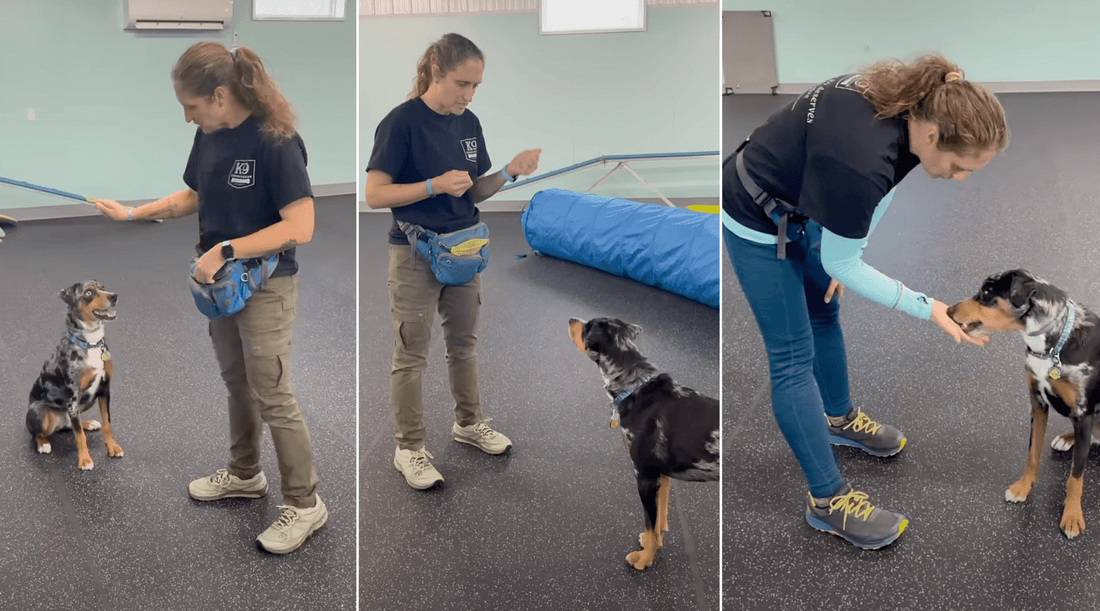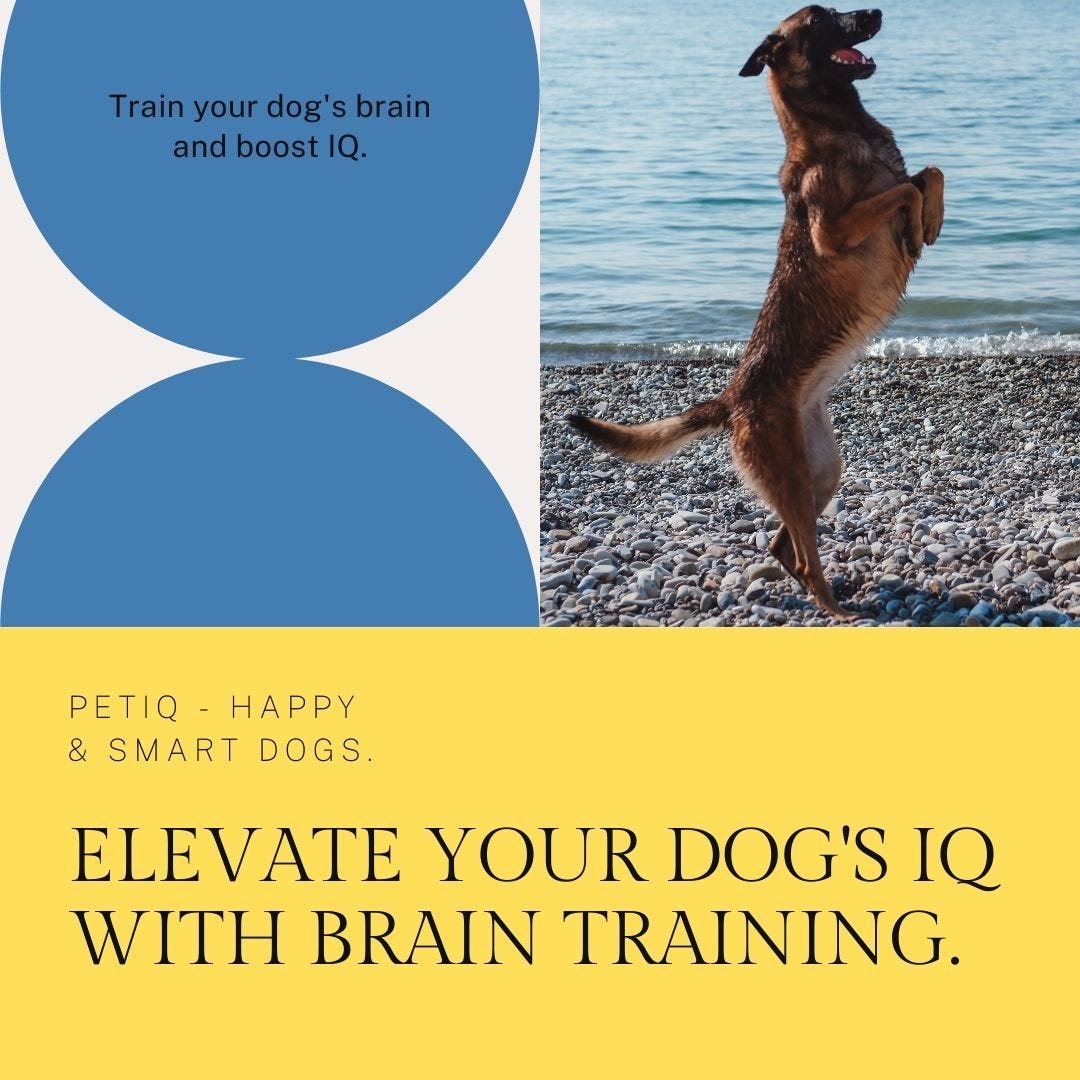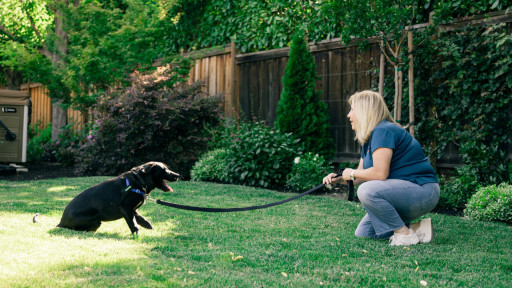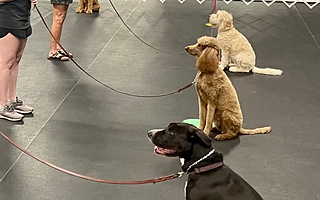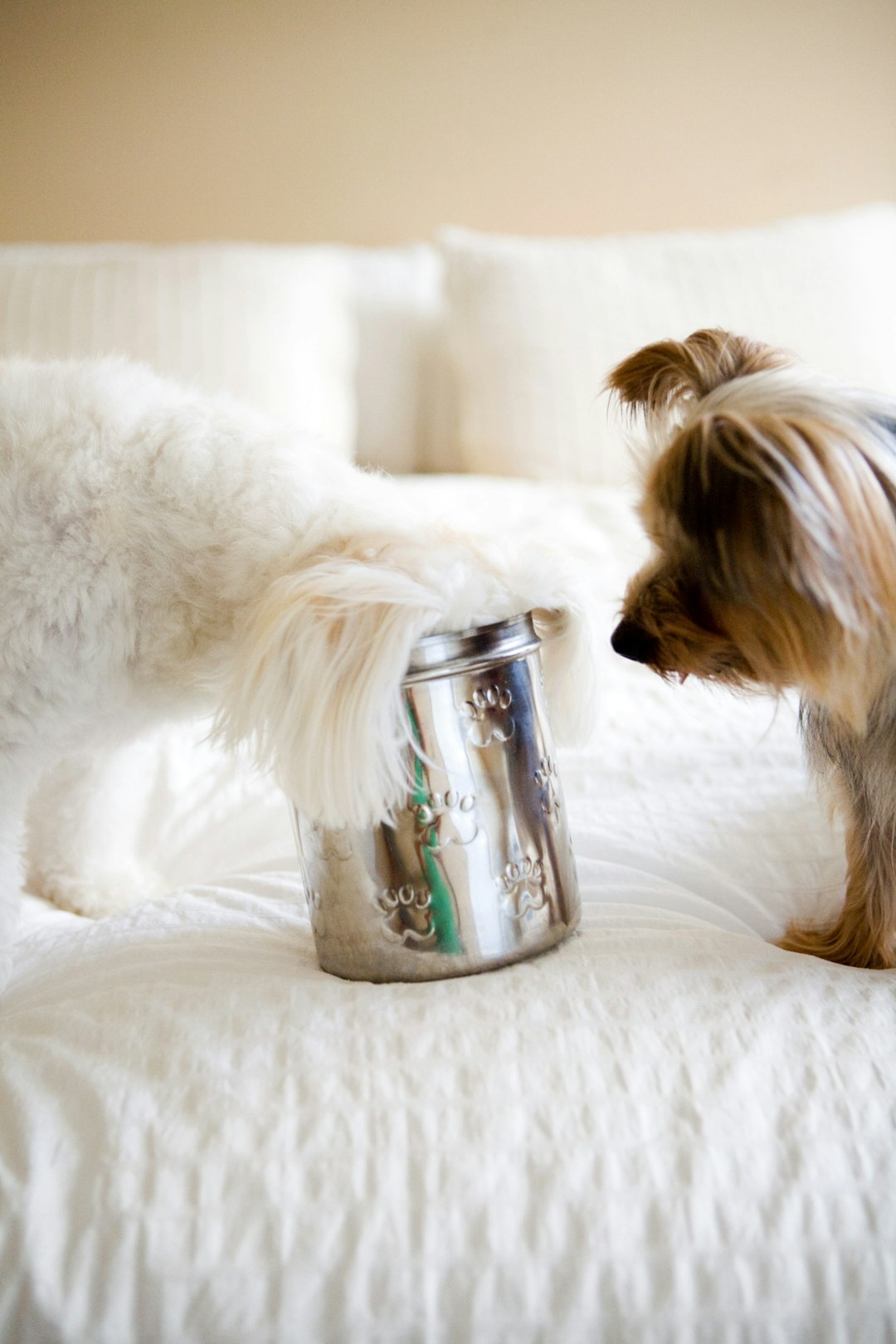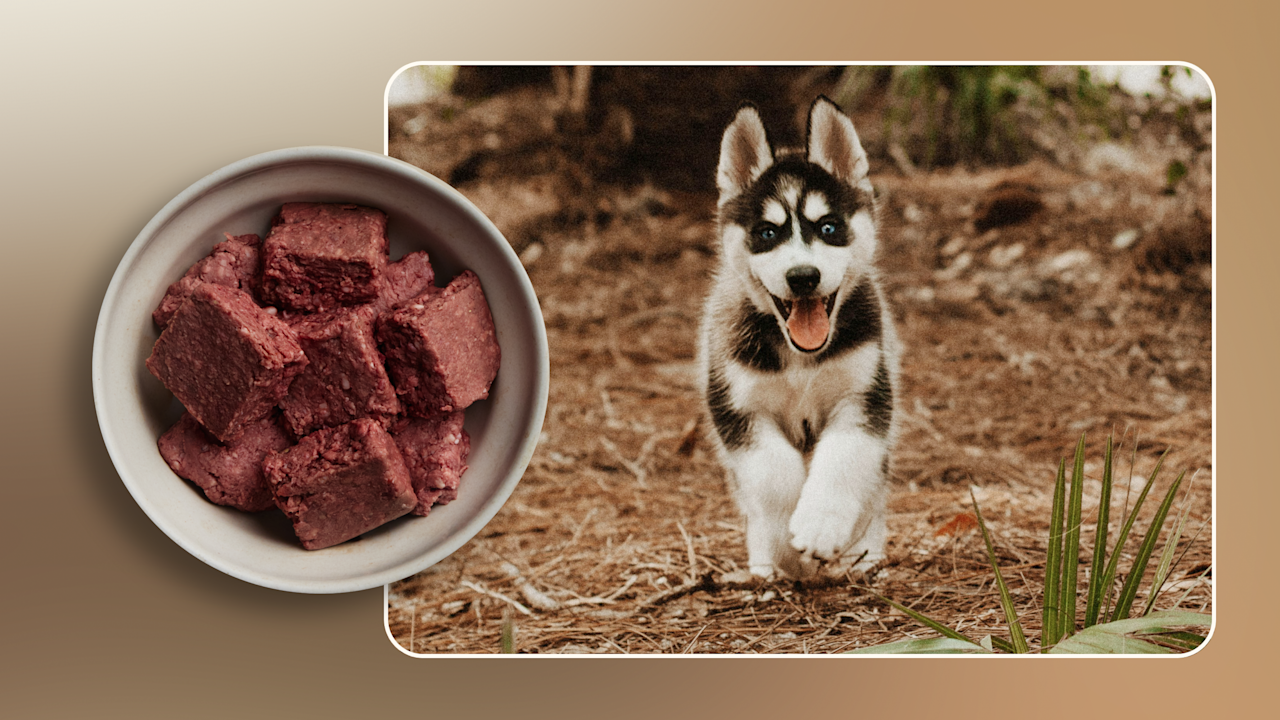Are you ready to take your dog’s skills to the next level? An advanced dog training class can open up a whole new world of learning for both you and your furry friend.
You’ll discover how to sharpen your dog’s obedience, improve communication, and tackle more challenging commands. Imagine the pride you’ll feel when your dog performs with confidence and precision. You’ll find out exactly what to expect from an advanced class and how it can strengthen the bond between you and your dog.
Keep reading to unlock the secrets of expert-level training!
Complex Obedience Commands
Advanced dog training classes take obedience commands to the next level. These classes focus on complex commands that enhance your dog’s skills. Your dog learns to respond with precision and confidence. This training builds trust and strengthens the bond between you and your dog.
Off-leash Control
Off-leash control is an essential skill for dogs. It teaches them to stay focused without a leash. Your dog learns to follow commands even with distractions around. This skill is crucial for safety in open spaces.
Distance Commands
Distance commands allow you to communicate with your dog from afar. Your dog learns to respond even if you’re not close by. This skill is useful in large areas or during outdoor activities. It enhances your dog’s listening abilities.
Hand Signals And Cues
Hand signals and cues are visual commands for dogs. They help your dog understand instructions without verbal cues. Your dog learns to associate movements with specific actions. This skill improves non-verbal communication and strengthens understanding.
Behavioral Refinement
Behavioral refinement in an advanced dog training class focuses on fine-tuning your dog’s responses and habits. It goes beyond basic obedience, helping your dog act appropriately in more challenging situations. You’ll learn skills that improve your dog’s self-control and emotional balance, making everyday life smoother and more enjoyable for both of you.
Impulse Control
Impulse control means teaching your dog to pause before reacting. This skill helps your dog wait patiently for things like treats, toys, or permission to cross the street.
In class, you practice exercises like “leave it” and “wait” that build your dog’s ability to think before acting. You might notice your dog becomes calmer and more focused even in exciting environments.
Reducing Reactivity
Reactivity often shows as barking, lunging, or growling at other dogs or people. Advanced training helps you identify your dog’s triggers and respond in a way that calms rather than escalates the behavior.
Techniques include controlled exposure to triggers and rewarding calm behavior. You’ll learn how to read your dog’s body language and step in before reactivity starts.
Managing Anxiety
Many dogs experience anxiety that affects their behavior. In this class, you learn ways to ease your dog’s stress through exercises and routines designed to build confidence.
Practical tips include creating safe spaces and using positive reinforcement during scary situations. You’ll also discover how your own calm energy can help your dog feel more secure.
Advanced Agility Techniques
Advanced agility techniques push both you and your dog beyond basic commands, sharpening your teamwork under pressure. This training is about mastering complex challenges that require focus, timing, and trust. It’s where your dog’s natural athleticism meets refined skills, making every movement count.
Obstacle Navigation
In advanced classes, your dog learns to handle a variety of obstacles with confidence. These include tunnels, weave poles, seesaws, and A-frames. You’ll practice guiding your dog smoothly through sequences, ensuring they understand each obstacle’s unique demands.
Have you noticed how your dog reacts differently to each obstacle? Training helps you read those signals and adjust your commands instantly. It’s not just about speed but also about your dog’s comfort and safety on the course.
Speed And Precision
Speed alone won’t win agility competitions; precision is key. You’ll work on refining your dog’s movements so they hit the right spots without hesitation. This means perfecting starts, stops, and tight turns with minimal corrections.
One way to develop this is by breaking down the course into smaller parts and practicing each until your dog moves fluidly. Think about how you can make your signals clearer and your timing sharper. Can you spot the moments where your dog slows down or gets confused?
Course Memory
Memorizing the sequence of obstacles is crucial for both you and your dog. Advanced classes challenge you to remember complex courses and communicate them effectively. This mental exercise builds your dog’s confidence and helps prevent errors during runs.
Try visualizing the course before starting and use consistent cues to reinforce the path. How well can your dog recall the order when you change the sequence? Practicing this strengthens your partnership and ensures smoother performances.

Credit: www.instagram.com
Specialized Skill Training
Specialized skill training takes your dog’s abilities far beyond basic commands. It challenges both you and your dog to master unique tasks that require focus, discipline, and teamwork. These skills can enhance your dog’s confidence and usefulness in everyday life or specific roles.
Scent Work
Scent work taps into your dog’s natural ability to detect and follow smells. You’ll learn how to train your dog to identify and locate specific scents hidden in various environments.
This skill is rewarding because it engages your dog’s mind and nose, providing mental stimulation and confidence. Imagine your dog proudly finding a hidden scent—it’s a game that sharpens their focus and bond with you.
Search And Rescue Basics
Search and rescue training teaches your dog to locate missing persons in different settings. You’ll practice using commands that guide your dog to search methodically and alert you upon finding someone.
Even if you don’t plan to work as a professional rescuer, these skills improve your dog’s problem-solving and obedience. Have you ever thought about how your dog could assist in emergencies or community efforts?
Service Dog Tasks
Service dog training covers specialized tasks that help people with disabilities in daily life. You might train your dog to retrieve objects, open doors, or provide stability while walking.
These tasks require patience and precision, and they deepen the connection between you and your dog. Could training your dog for service tasks add real value to your life or the life of someone you know?
Problem Solving Strategies
Problem solving strategies in advanced dog training classes help owners handle common challenges. These techniques teach how to deal with difficult behaviors calmly and effectively. Trainers focus on practical ways to improve communication between you and your dog. The goal is to create a trusting and respectful relationship.
Addressing Stubbornness
Stubborn dogs need patience and consistent guidance. Trainers show how to stay calm when your dog resists commands. Understanding why your dog acts stubborn helps find the right approach. Using positive reinforcement encourages your dog to listen more. Small rewards and clear signals build better cooperation over time.
Correcting Unwanted Behaviors
Unwanted behaviors like barking, jumping, or chewing can be frustrating. Training classes teach ways to identify triggers for these actions. You learn to redirect your dog’s energy into positive tasks. Consistent correction combined with praise helps reduce bad habits. Setting clear rules makes your dog feel secure and well-guided.
Enhancing Focus
Focus is key for advanced training success. Exercises improve your dog’s attention span in busy environments. Trainers guide you to use short, fun sessions that keep your dog engaged. Teaching your dog to focus on you builds stronger obedience. This skill helps in both daily life and challenging situations.
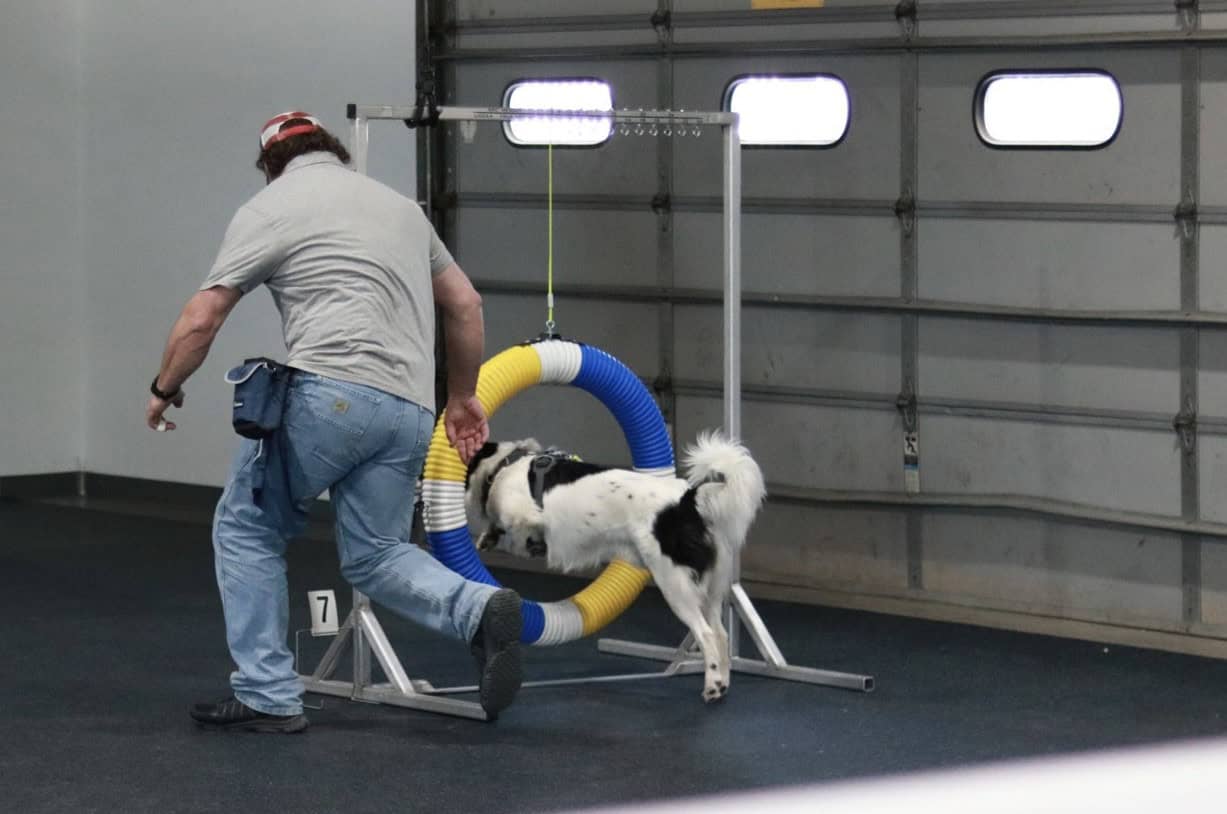
Credit: www.theacademyofpetcareers.com
Handler-dog Communication
Handler-dog communication is the foundation of any advanced training class. It goes beyond simple commands and responses. This communication means truly understanding your dog’s signals, emotions, and motivations, creating a connection that guides your training sessions effectively.
Reading Canine Signals
Dogs communicate mostly through body language. Learning to read subtle signs like tail position, ear movement, and eye contact helps you anticipate your dog’s needs or stress levels.
Have you noticed your dog’s sudden yawning or lip licking during training? These often indicate discomfort or confusion. Catching these early lets you adjust your approach before frustration builds.
- Watch for relaxed vs. tense postures
- Notice when your dog avoids eye contact or stares intently
- Identify playful gestures versus signs of fear or anxiety
Building Trust
Trust forms the core of handler-dog communication. Your dog needs to feel safe and confident that you understand and respect their feelings.
In one session, I slowed my pace when I saw hesitation in my dog’s body language. This small change instantly improved her focus and willingness to work.
Consistency and patience show your dog that you’re reliable. This trust encourages them to engage and respond positively even in challenging situations.
Effective Reinforcement
Communication is incomplete without clear feedback. Reinforcement tells your dog which behaviors you want to see more often.
Use rewards like treats, praise, or play immediately after the desired action. Timing is crucial—delayed reinforcement can confuse your dog about what they did right.
Try varying your reinforcement to keep your dog interested and motivated. Sometimes, a quick tug on a favorite toy can be more powerful than a treat.
Safety And Emergency Skills
Safety and emergency skills are vital in advanced dog training classes. They help you keep your dog safe in tough situations. These skills also build trust between you and your dog. Trainers focus on real-life scenarios where quick responses matter. You will learn clear commands that your dog obeys instantly. The training covers both prevention and action during emergencies.
Recall In Distractions
Recall means calling your dog back to you. It becomes hard when distractions are around. Advanced classes teach strong recall despite noises, other animals, or smells. Trainers use rewards and practice in different settings. Reliable recall keeps your dog away from danger. It also helps control your dog in busy places.
Emergency Stop Commands
Emergency stop commands make your dog stop immediately. These commands are different from normal commands. They need fast and strong reactions. Training includes teaching your dog to freeze or sit on command. This skill is useful near roads or during unexpected events. It prevents accidents and keeps your dog safe.
First Aid Basics
Knowing first aid helps you assist your dog before help arrives. Classes cover simple but important actions like:
- Stopping bleeding
- Handling choking
- Dealing with heatstroke
- Recognizing signs of poisoning
You learn how to keep your dog calm and safe during emergencies. This knowledge can save your dog’s life.

Credit: www.facebook.com
Frequently Asked Questions
What Skills Are Taught In Advanced Dog Training Classes?
Advanced dog training classes teach complex commands, off-leash control, and socialization skills. They focus on improving obedience and problem-solving abilities, making your dog more responsive and well-behaved in various environments.
How Does Advanced Training Improve Dog Behavior?
Advanced training addresses specific behavioral issues and reinforces good habits. It helps dogs learn impulse control, focus, and better communication with their owners, resulting in a calmer, more confident pet.
Are Advanced Dog Training Classes Suitable For All Breeds?
Yes, advanced classes are designed for all breeds and sizes. Trainers tailor techniques to each dog’s temperament and learning pace, ensuring effective skill development regardless of breed differences.
What Equipment Is Needed For Advanced Dog Training?
Basic equipment includes a leash, collar or harness, and treats for rewards. Some classes may use clickers or specialized training tools to enhance learning and reinforce commands.
Conclusion
Advanced dog training classes teach skills beyond basic commands. You learn to handle distractions and improve focus. Training builds stronger communication between you and your dog. Classes cover new tricks and better behavior control. You also discover ways to solve common problems.
These lessons help your dog become more confident and calm. Training sessions create a fun and rewarding experience. Your bond with your dog grows deeper each day. This class is a great step for dedicated dog owners. It helps both you and your dog enjoy life together.

